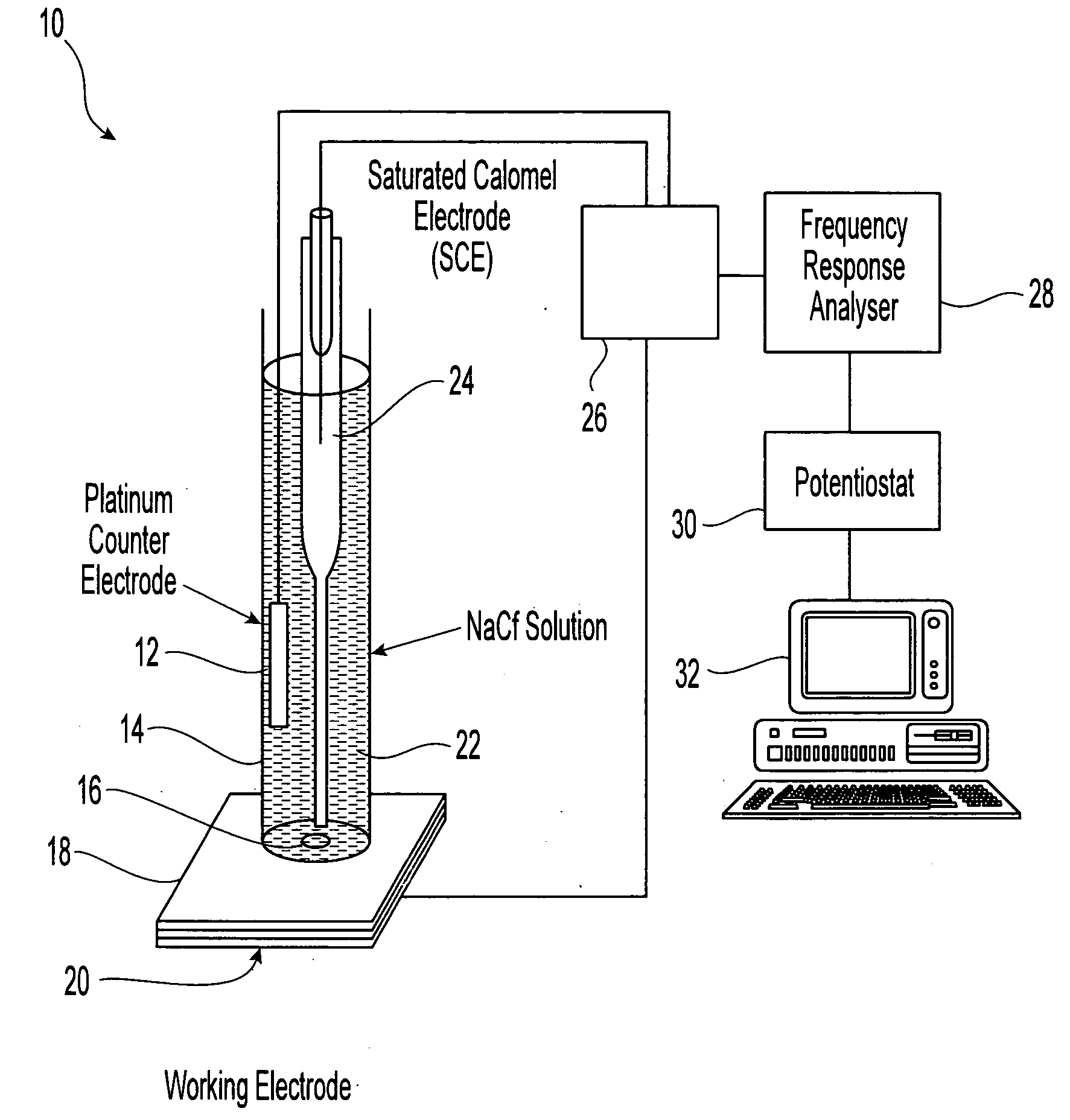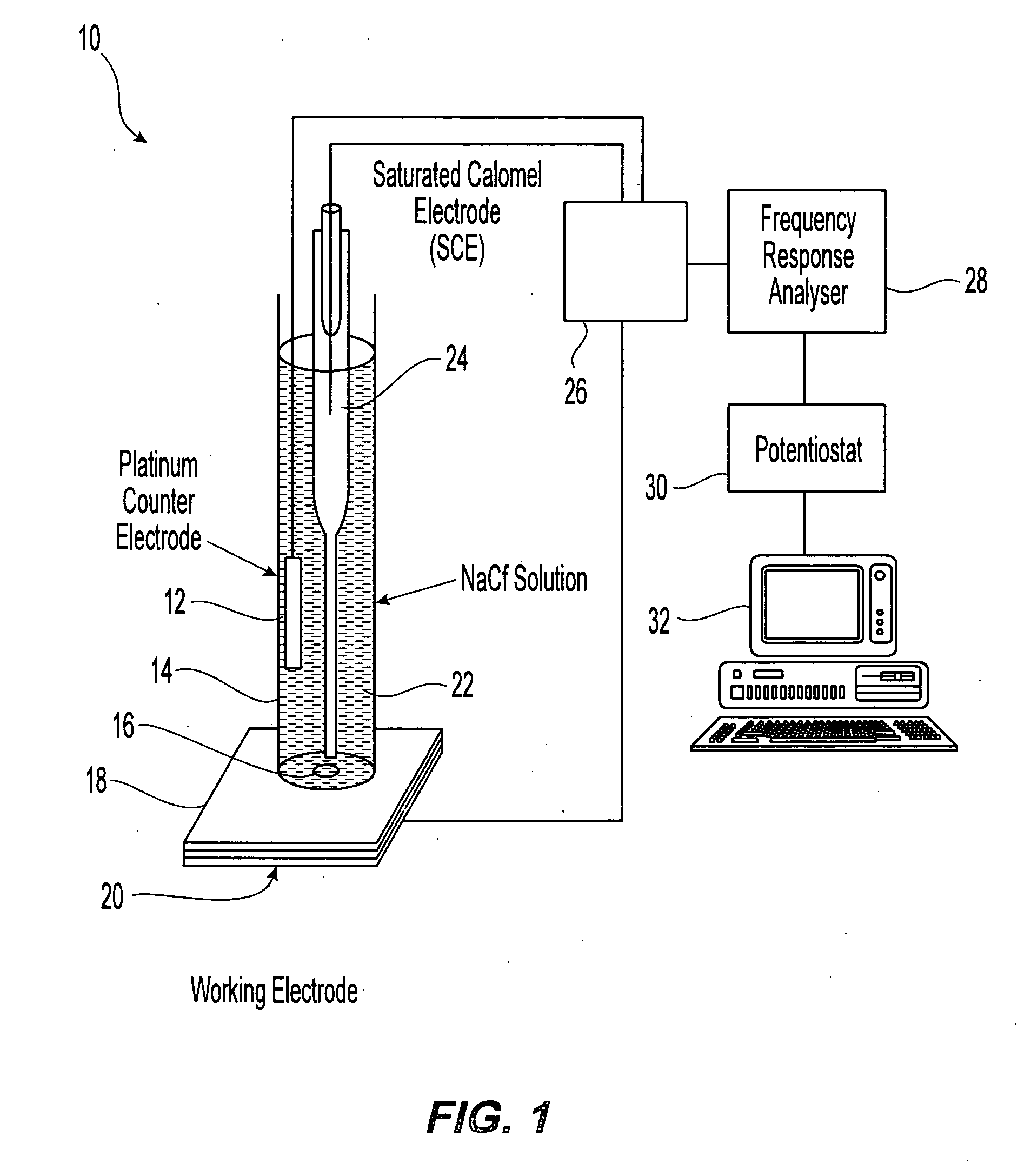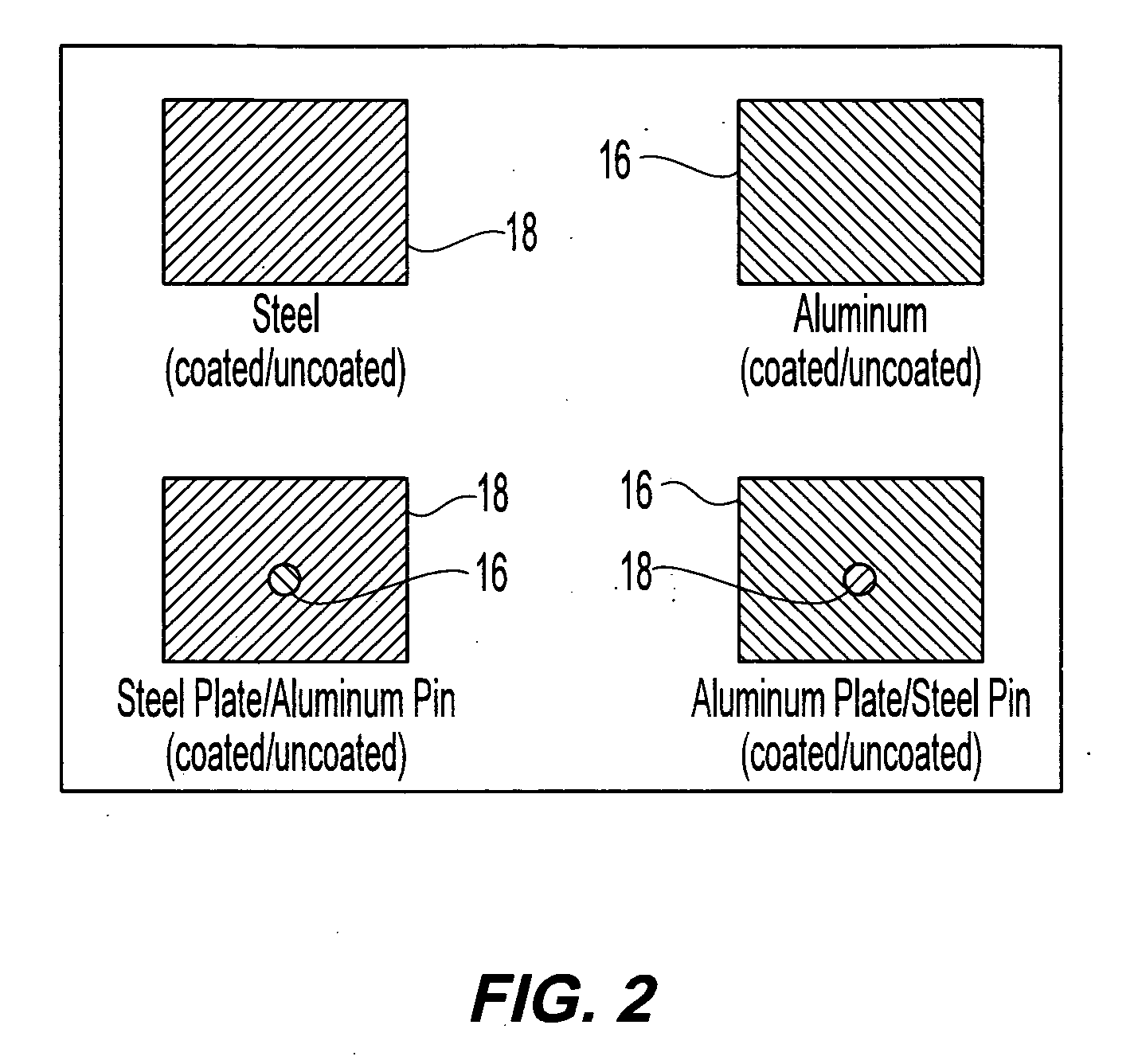System and method of use for electrochemical measurement of corrosion
a technology of electrochemical measurement and corrosion, applied in the field of electrochemical impedance spectroscopy, can solve the problems of affecting the corrosion rate of both metals, requiring costly maintenance and repairs, and experimental times of the order of months or years to yield any useful,
- Summary
- Abstract
- Description
- Claims
- Application Information
AI Technical Summary
Benefits of technology
Problems solved by technology
Method used
Image
Examples
Embodiment Construction
[0018]Referring now to FIG. 1, an exemplary embodiment of a system 10 in accordance with the present invention for using Electrochemical Impedance Spectroscopy (EIS) to determine the corrosion rate of both uncoated and coated galvanically coupled metals is illustrated. The system 10 includes an electrochemical cell 14 containing an electrolyte 22 or electrolytic solution. The electrolyte 22 is selected to be able to conduct the desired current to the metals to be tested and to simulate the corrosive environment for the metals. Suitable electrolytes include salt solutions such as sodium chloride (NaCl) solutions, which simulate brackish water or seawater exposure.
[0019]In one embodiment, the electrochemical cell 14 contains a 0.5 normal NaCl solution. In contact with the cell 14 and with the electrolyte 22 inside the cell is a working electrode 20 that contains the coupled metals, a first metal 18 and a second metal 16. The metals are selected to be dissimilar such that one metal is ...
PUM
 Login to View More
Login to View More Abstract
Description
Claims
Application Information
 Login to View More
Login to View More - R&D
- Intellectual Property
- Life Sciences
- Materials
- Tech Scout
- Unparalleled Data Quality
- Higher Quality Content
- 60% Fewer Hallucinations
Browse by: Latest US Patents, China's latest patents, Technical Efficacy Thesaurus, Application Domain, Technology Topic, Popular Technical Reports.
© 2025 PatSnap. All rights reserved.Legal|Privacy policy|Modern Slavery Act Transparency Statement|Sitemap|About US| Contact US: help@patsnap.com



